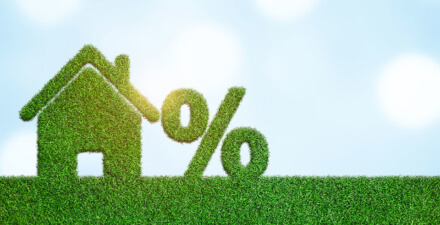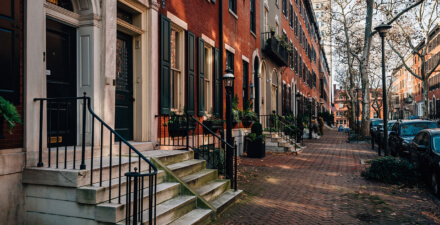Latino homeownership: Confronting home appraisal bias to create a more equitable and more sustainable U.S. economic trajectory

Homeownership is part of the American Dream and a pathway to build wealth for many people in the United States. Homeownership allows families to plant roots, build equity, and secure financial stability for future generations. But this is not the case for everyone. For some, there is a hidden barrier that disrupts the wealth-building potential of homeownership: appraisal bias.
Appraisal bias is a skewed valuation of a home’s worth based on the racial or ethnic identity of its owners or its surrounding neighborhood. Systemic, deeply entrenched, and difficult to identify, appraisal bias steers the wealth-building trajectory of millions of families off course. Excellent new work and reporting brings to light the issue for the Black community, but the effects of appraisal bias are widespread, particularly for the Latino community.
What does this look like in reality? Consider the experience of Yoselin. In 2018, Yoselin and her husband took a monumental step toward securing their financial future—they became homeowners. The house, a three-bedroom, two-bathroom property in Brooklyn, New York, represented more than just a place to live; it symbolized hope and opportunity to build family and community.
At the time of purchase, they could not afford a 20 percent down payment, which meant they needed to cover the additional cost of private mortgage insurance. Knowing the sacrifices required for wealth-building, they decided this was worth it. Over the years, they transformed their home with energy-efficient upgrades and interior improvements, injecting love and labor into every nook and cranny.
By 2021, the housing market had soared, with property values across the country escalating at an unprecedented rate. Viewing this as a golden opportunity to reduce their interest rate, adjust their loan-to-value ratio below 80 percent to end the requirement for private mortgage insurance, and lower their monthly payments, the two homeowners contacted their financial institution to refinance their mortgage. During the refinancing process, an appraisal was conducted of their property.
To their shock, the appraisal report was riddled with discrepancies. Their appraisal had one less bedroom than the previous appraisal, for example—one big reason why the home listed for less in 2021 than it did in 2018, significantly diminishing its value. The appraisal value was set at $515,000, glaringly short of comparable neighborhood properties selling for between $550,000 and $590,000.
Armed with proof of discrepancies from the original appraisal, they petitioned for a reevaluation, expecting an easy fix. Their appeal was met with bureaucratic obstinance, and they were unable to secure a reevaluation. As the dust settled, the only options available to them were to continue paying for private mortgage insurance or to reduce the loan amount—a cost they simply could not afford. They were trapped by the unexpected appraisal result and ultimately decided to bear the added costs of the mortgage insurance premium.
This story is a testament to the harsh reality that systemic biases, even in seemingly mundane practices such as home appraisals, can significantly hamper wealth-building within marginalized communities. The account of Yoselin’s family isn’t an isolated case. It ties into the broader issue of appraisal bias that significantly impacts homeownership and wealth-building in marginalized communities.
In response to a mandate from the Biden administration and the intergovernmental Property Appraisal and Valuation Equity, or PAVE, task force, the Federal Housing Finance Agency in 2022 unveiled 47 million public appraisal reports. These reports, collected between 2013 and 2021, exposed an enduring bias in the home appraisal industry favoring higher values for homes owned by White individuals, while depreciating those owned by people of color. An analysis of these appraisals, using U.S. Census Bureau tracts to represent neighborhoods and comparing similar housing areas, identified a clear link: the more White residents in a community, the higher the appraised home values.
The data also show that the impacts of appraisal bias are particularly stark for the Latino community. According to a recent report by the housing finance giant Freddie Mac, home purchases in majority-Latino neighborhoods are about twice as likely to be undervalued, compared to appraisals in predominantly White neighborhoods. To put it that into perspective, about 15.4 percent of single-family properties in majority-Latino census tracts were appraised lower than their contract price between 2015 and 2020, compared to 12.5 percent in majority-Black areas and 7.4 percent in majority-White areas.
The results were even starker when the concentration of Latinos was higher. The rate of homes with lower appraisals increased to 16.7 percent in areas where Latinos represent 80 percent or more of the population. To put it another way, if four out of your five neighbors are Latinos, then your house has a 1 in 6 chance of having an appraisal lower than the contract price.
It gets worse. As if undervaluation weren’t bad enough, the magnitude of the lost value is breathtaking and lifechanging. A 2022 study of the recently released FHFA data by Junia Howell, a sociologist at the University of Illinois Chicago, finds that in metropolitan areas with at least 50,000 Latino residents, the average house in a Latino neighborhood was appraised at $321,000. Comparatively, in these areas, the average house in a White neighborhood was appraised at $891,000, reflecting a whopping 278 percent higher appraisal value, on average.
This is not only a travesty for the individual homeowners but also for the overall housing market. Latino homeownership serves as a powerful engine for the U.S. housing sector, playing a pivotal role in the robustness of the U.S. economy. According to the Urban Institute, over the next 20 years, Latinos will comprise 70 percent of net new U.S. homeowners and are essential to the future of the U.S. housing market and U.S. economy. With housing’s combined contribution to the U.S. Gross Domestic Product, at 17 percent annually, the success of Latino homeowners and the U.S. housing market have a mutual dependence and shared trajectory.
Change is needed to ensure that homeowners such as Yoselin can access the full potential wealth-building power of homeownership, as well as to support the broader housing market and ensure that the economic potential of the Latino community is fully realized. Policymakers and the housing industry must take actions recommended by the National Fair Housing Alliance and the PAVE taskforce. Specifically, they should:
- Redefine the governance structure of appraisals. Empower the Appraisal Subcommittee of the interagency Federal Financial Institutions Examination Council by giving the subcommittee the authority to establish rules for how properties are appraised and who can perform these appraisals for all mortgage transactions.
- Diversify the appraiser profession. Make the appraiser profession more accessible by reducing barriers to entry. Additionally, ensure all appraisers are well-trained in fair housing practices to promote diversity and equity, as well cultural competence and language proficiency.
- Enhance appraisal standards. Strengthen the integrity of property appraisals by giving the Appraisal Subcommittee the authority to advance rules that ensure appraisals are fair, transparent, and supported by data.
- Boost funding for fair housing. Allocate more resources to U.S. Housing and Urban Development programs that advocate for fair housing. Additionally, invest in initiatives that educate the public about appraisal discrimination and how to appeal valuations they believe to be unfair. These educational programs must be available in multiple languages and should be led by community-based organizations.
- Improve data access. Equip the Consumer Financial Protection Bureau with the authority to establish rules under the Home Mortgage Disclosure Act requiring mortgage lenders to share valuation data. These data should be organized into a publicly accessible database.
The proposed actions offer a starting point and a blueprint for systemic change. While each action alone might not eliminate appraisal bias, collectively, they can initiate the structural change necessary for a fairer system.
Addressing appraisal bias for the Latino community is not just about making things right for families such as Yoselin’s or addressing individual injustices. It is also about recognizing the role that homeownership plays in wealth accumulation and, in turn, the broader economic health of the United States. By rectifying these discrepancies, we can ensure that homeownership is a wealth-building tool accessible to all, irrespective of race or ethnicity.
—Sam Kenney is a senior policy analyst at UnidosUS with the economic development team focused on housing and wealth building.







